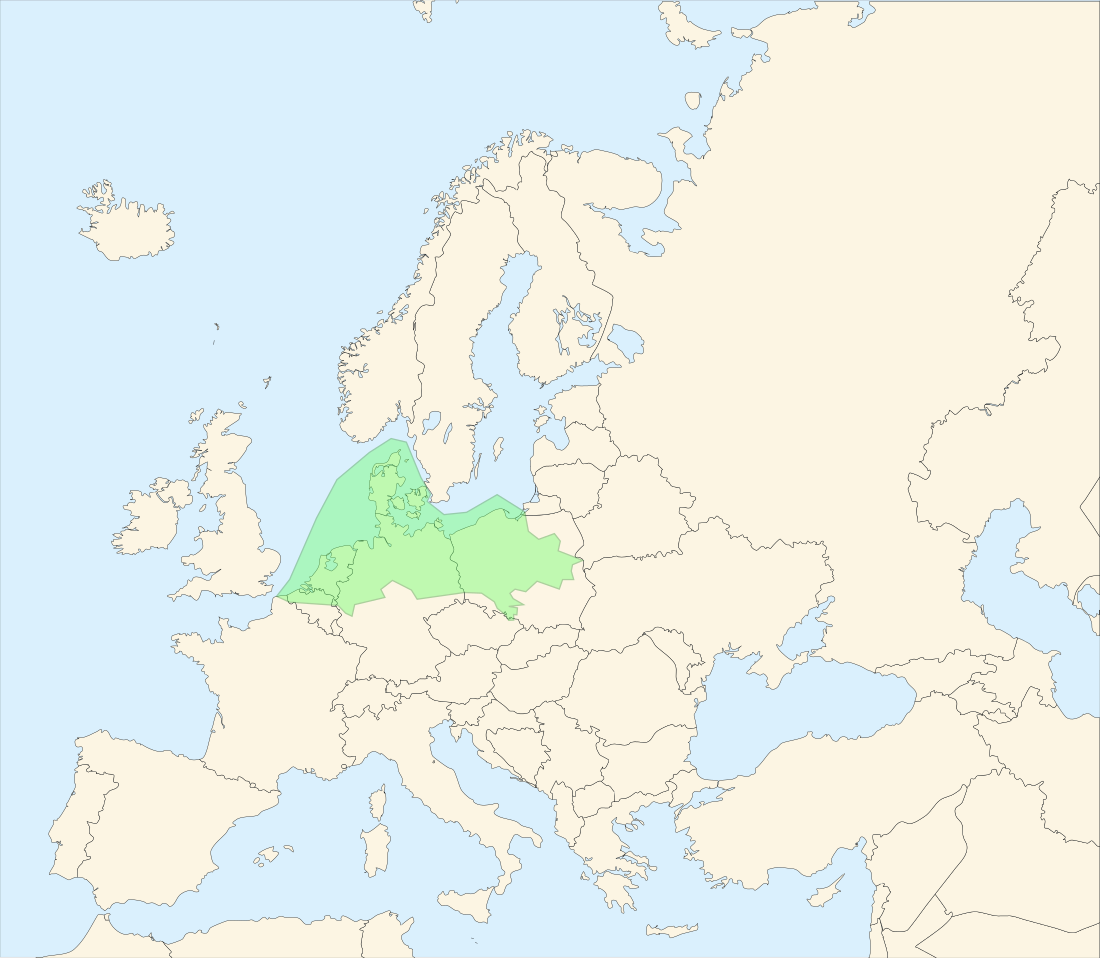Top Qs
Timeline
Chat
Perspective
North European Plain
Geomorphological region in Europe From Wikipedia, the free encyclopedia
Remove ads
The North European Plain (German: Norddeutsches Tiefland – North German Plain; Mitteleuropäische Tiefebene; Polish: Nizina Środkowoeuropejska – Central European Plain; Danish: Nordeuropæiske Lavland and Dutch: Noord-Europese Laagvlakte; French: Plaine d'Europe du Nord) is a geomorphological region in Europe that covers all or parts of Belgium, the Netherlands (i.e. the Low Countries), Germany, Denmark, and Poland.
This article includes a list of references, related reading, or external links, but its sources remain unclear because it lacks inline citations. (December 2017) |


It consists of the low plains between the Hercynian Europe (Central European Highlands) to the south and coastlines of the North Sea and the Baltic Sea to the north. These two seas are separated by the Jutland Peninsula (Denmark). The North European Plain is connected to the East European Plain, together forming the majority of the Great European Plain (European Plain).
Remove ads
Geography
Elevations vary between 0 and 200 m (0 to about 650 ft). While mostly used as farmland, the region also contains bogs, heath and lakes. The Wadden Sea, a large tidal area, is located on the North Sea coast.
A number of freshwater lagoons including the Szczecin Lagoon, the Vistula Lagoon and the Curonian Lagoon are found on the Baltic Sea coast.
Location
The North European Plain covers Flanders (northern Belgium and Northern France), the Netherlands, Northern Germany, Denmark, and most of central-western Poland; it touches the Czech Republic and southwestern part of Sweden as well. [citation needed]
Parts of eastern England can also be considered part of the same plain; as they share its low-lying character and were connected by land to the continent during the last ice age.[citation needed] The Northern European Plains are located also under the Baltic Sea.[citation needed]
Remove ads
Rivers
Major river-drainage basins include, from west to east: The Ems, Weser, Elbe, Oder, Vistula and this region of Europe is where the Rhine river starts.
The soils surrounding the river basins are thin, making agriculture difficult.[citation needed]
Sub-regions
Low Countries
Historically, especially in the Middle Ages and Early modern period, the western section has been known as the Low Countries.
North German Plain
The North German Plain is located north of the Central Uplands of Germany.
Polish Plain
The part in modern-day Poland is called the "Polish Plain" (Polish: Niż Polski or Nizina Polska) and stretches from the Baltic Sea in the north to the Sudetes and Carpathians
English flatlands
The extension of the plain into England consists mainly of the flatlands of East Anglia, the Fens and Lincolnshire, where the landscape is in parts strikingly similar to that of the Netherlands.
Remove ads
See also
External links
Remove ads
Wikiwand - on
Seamless Wikipedia browsing. On steroids.
Remove ads
